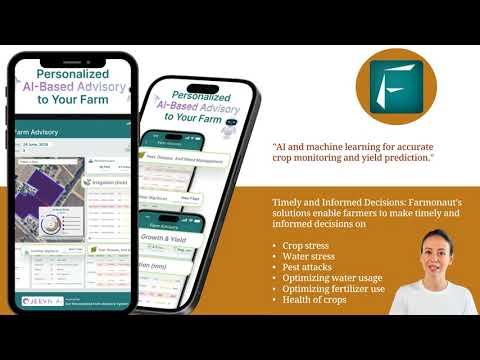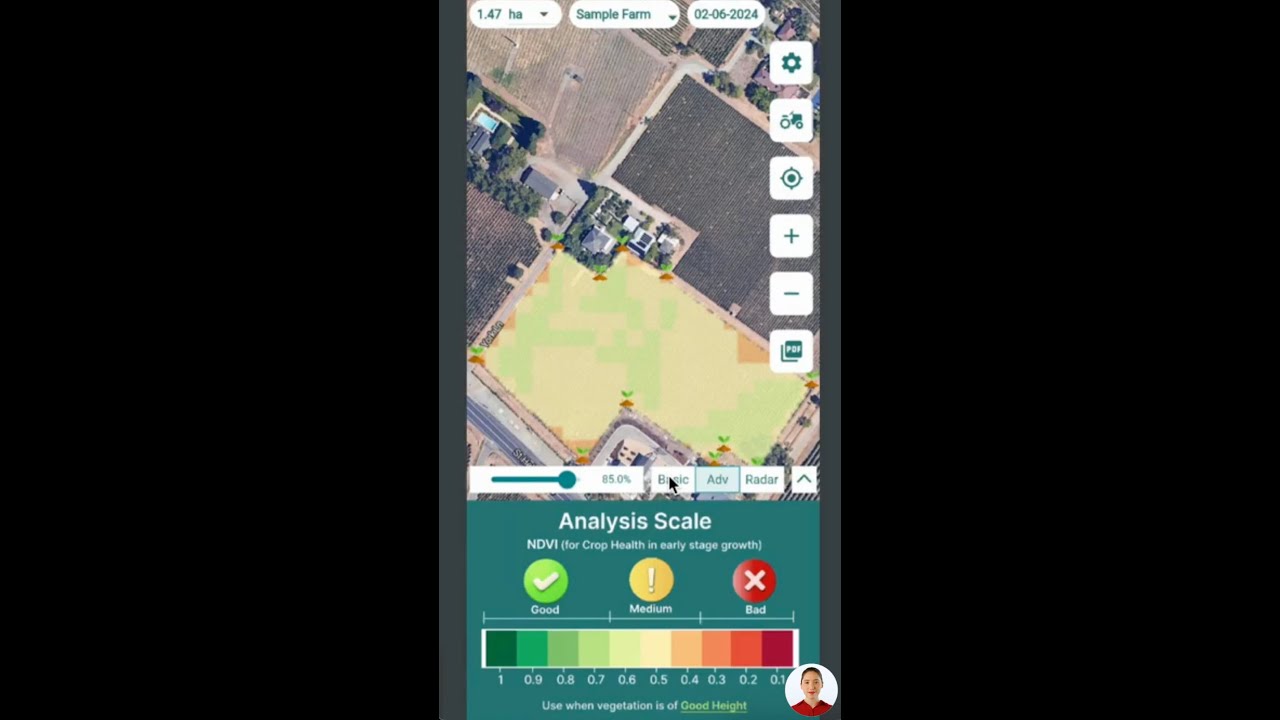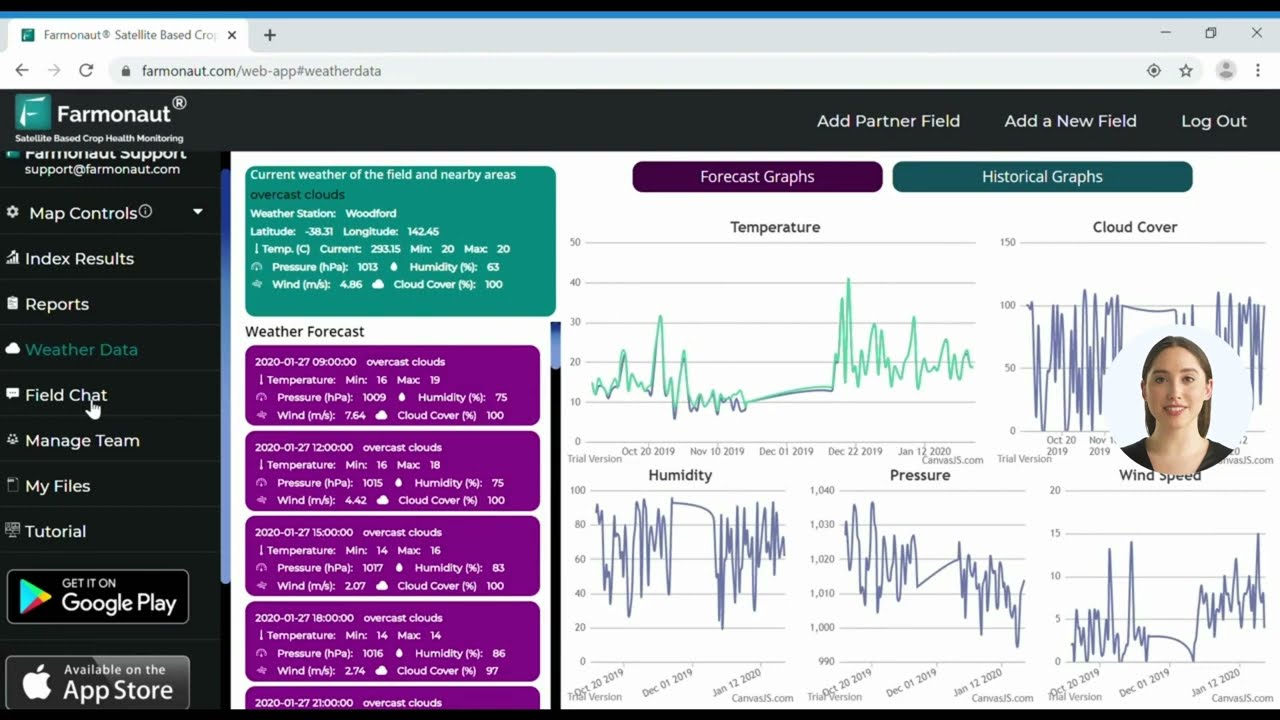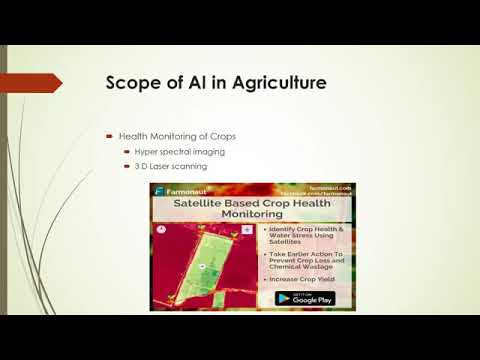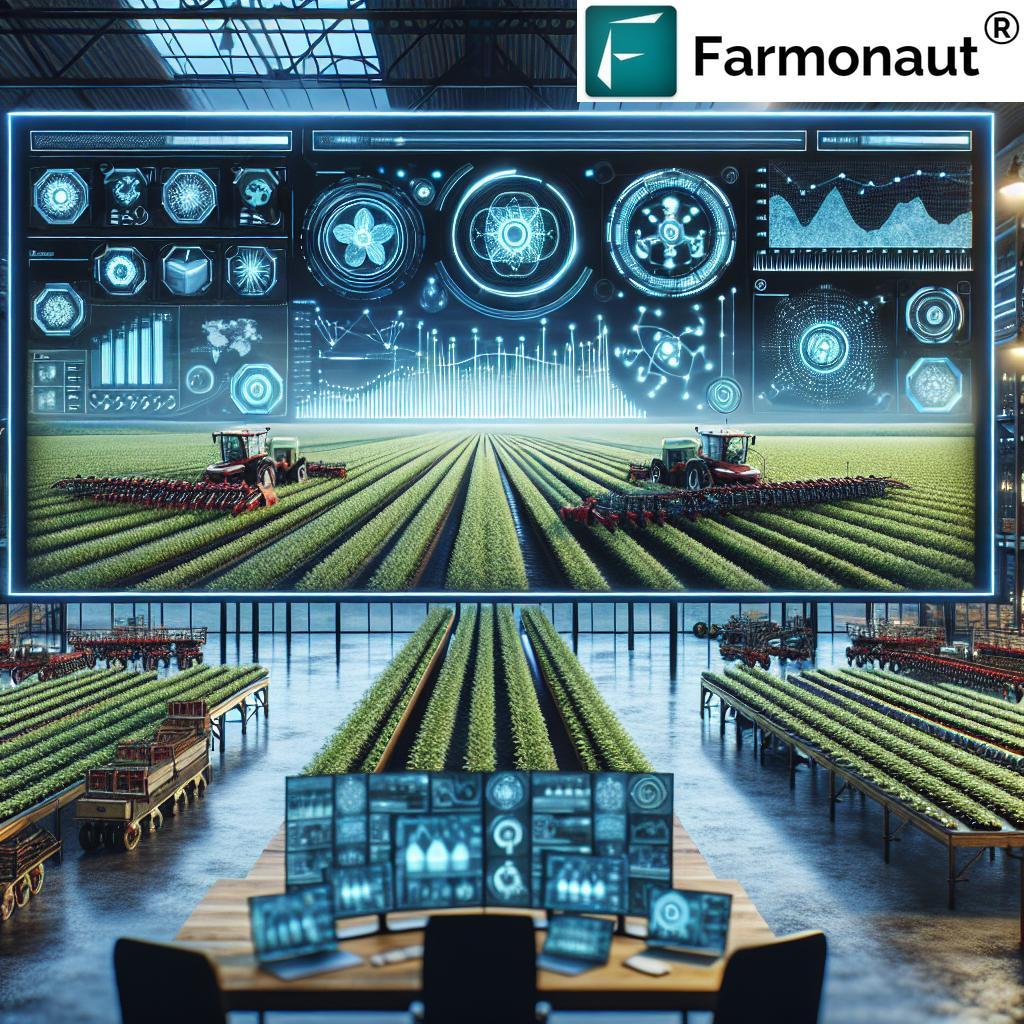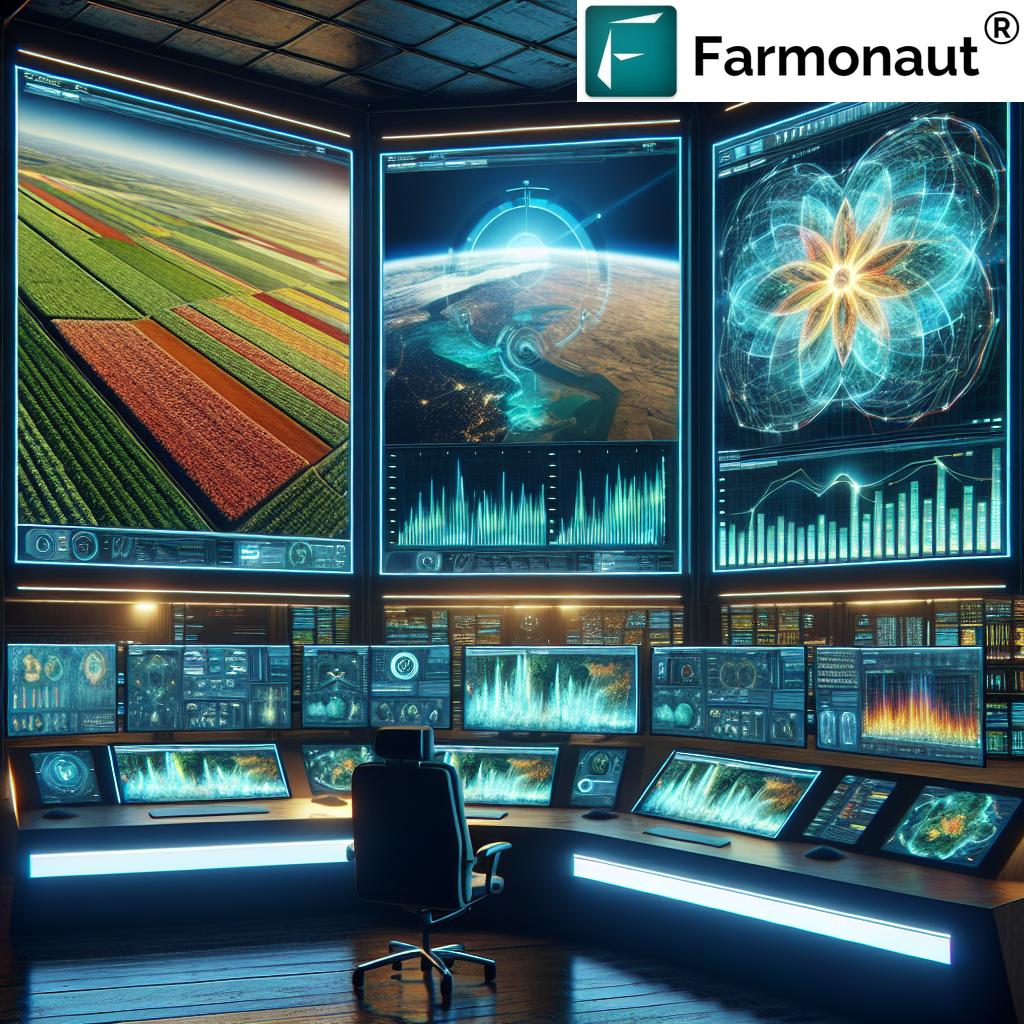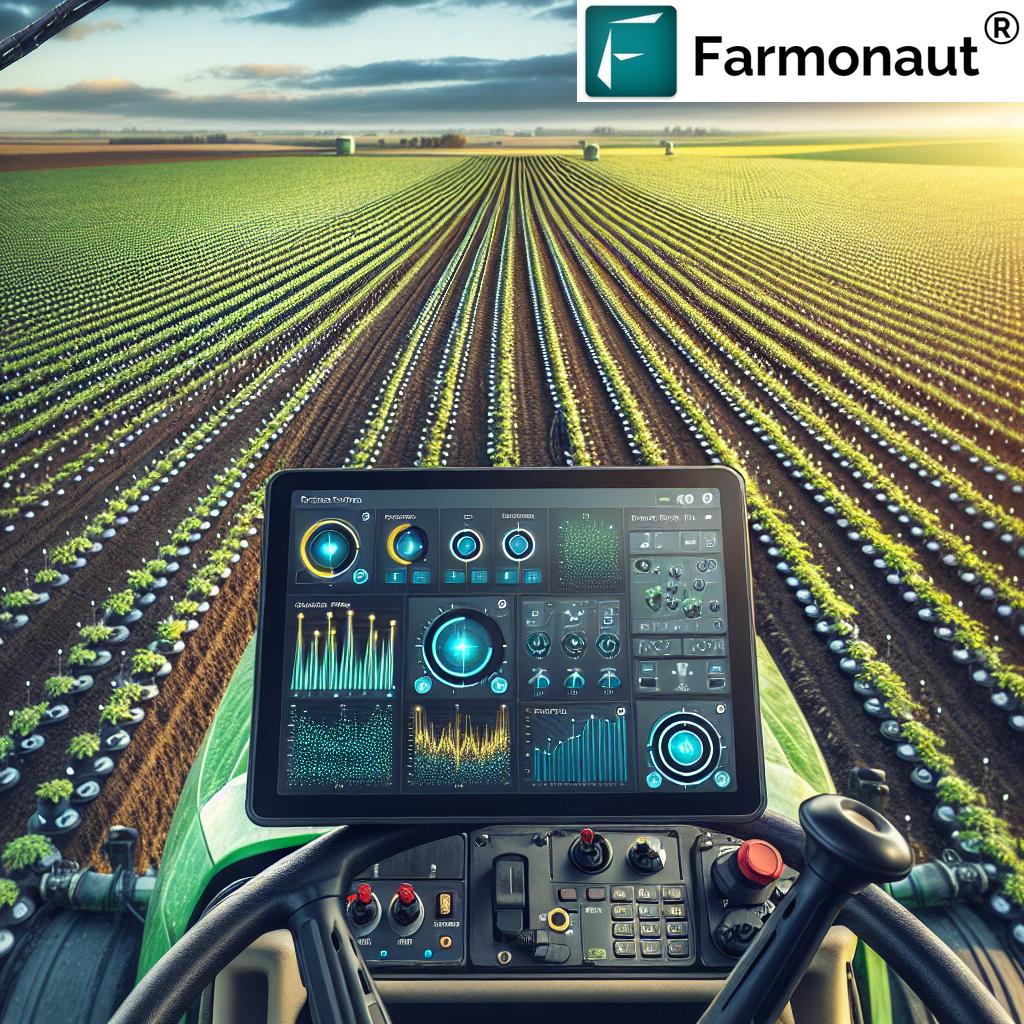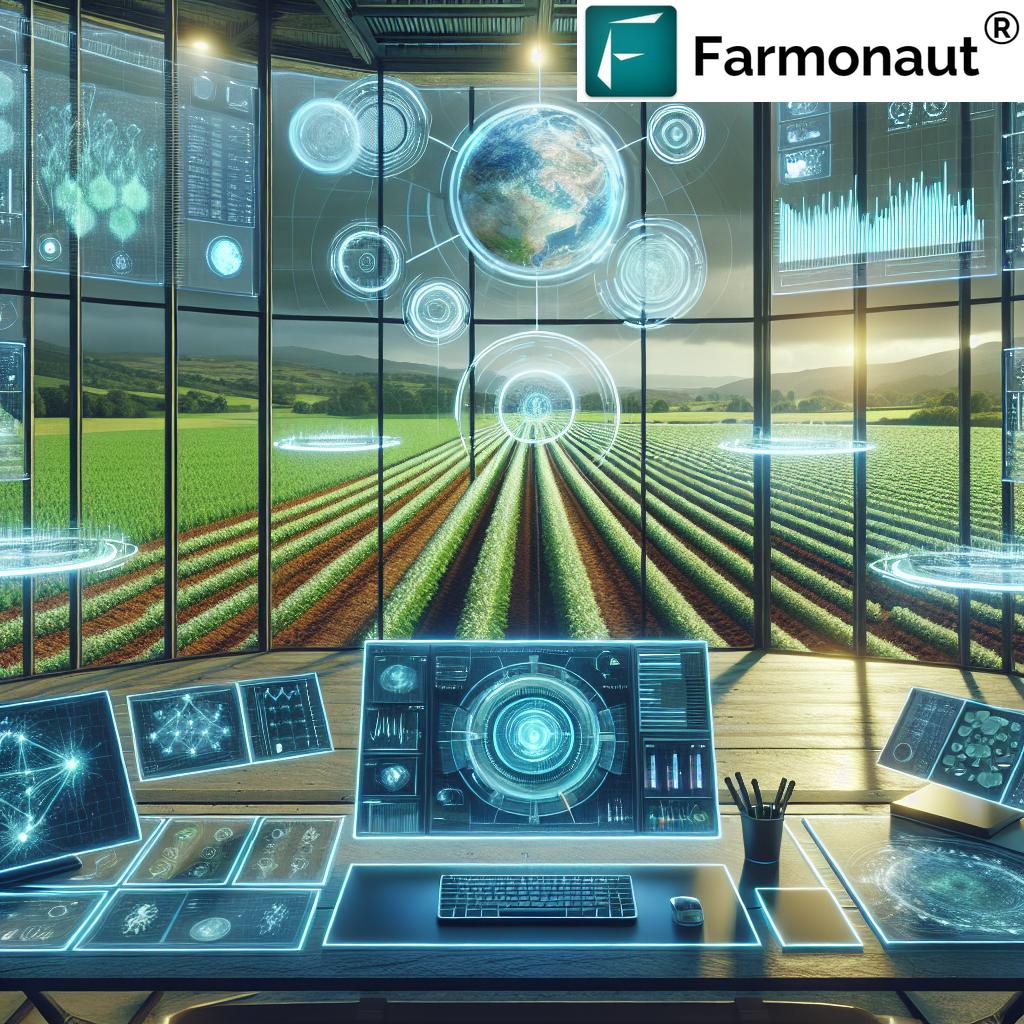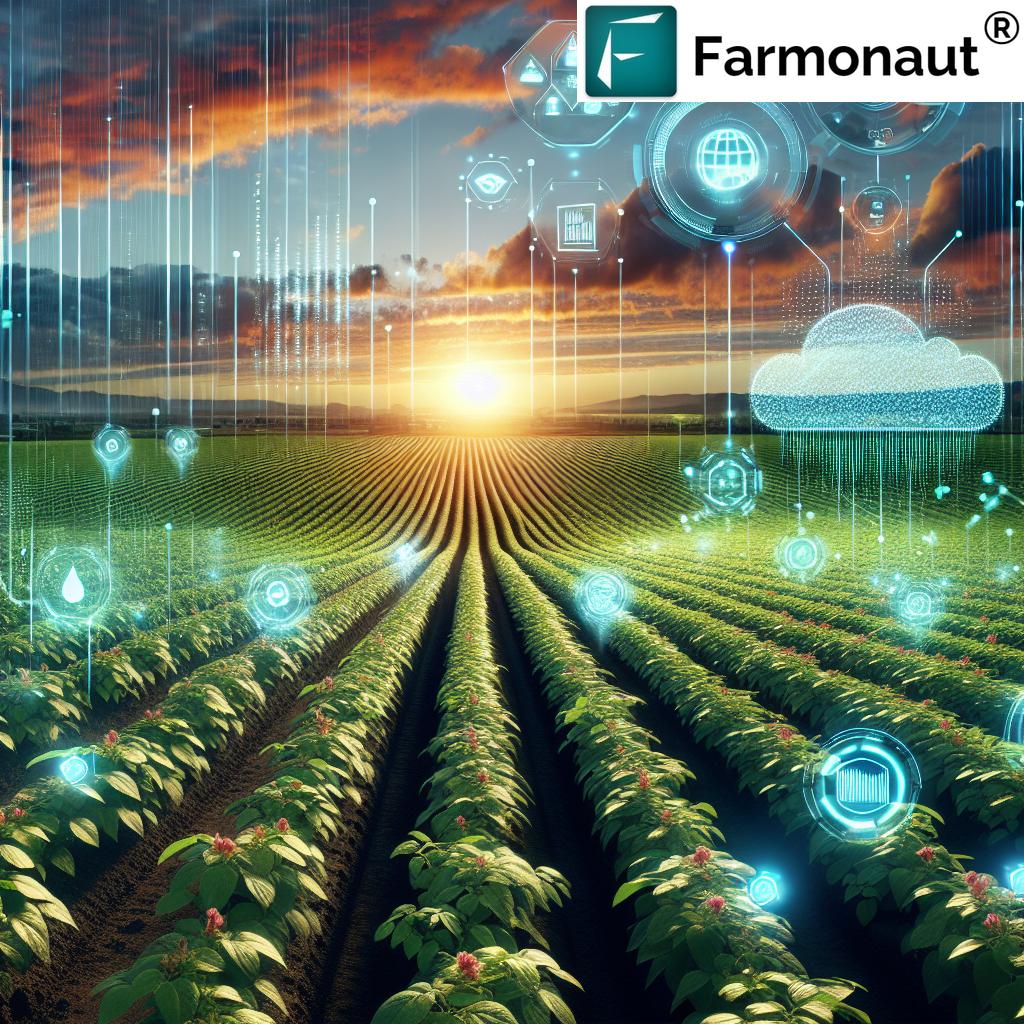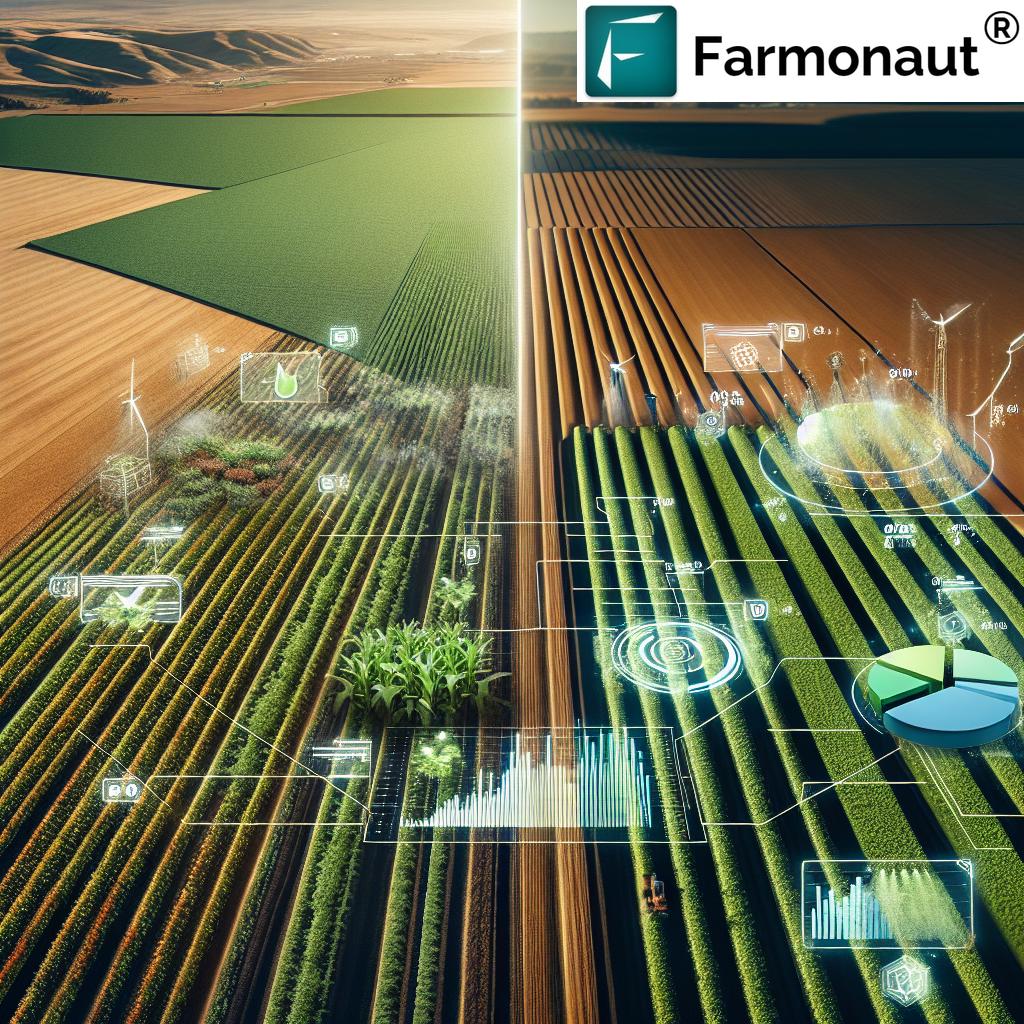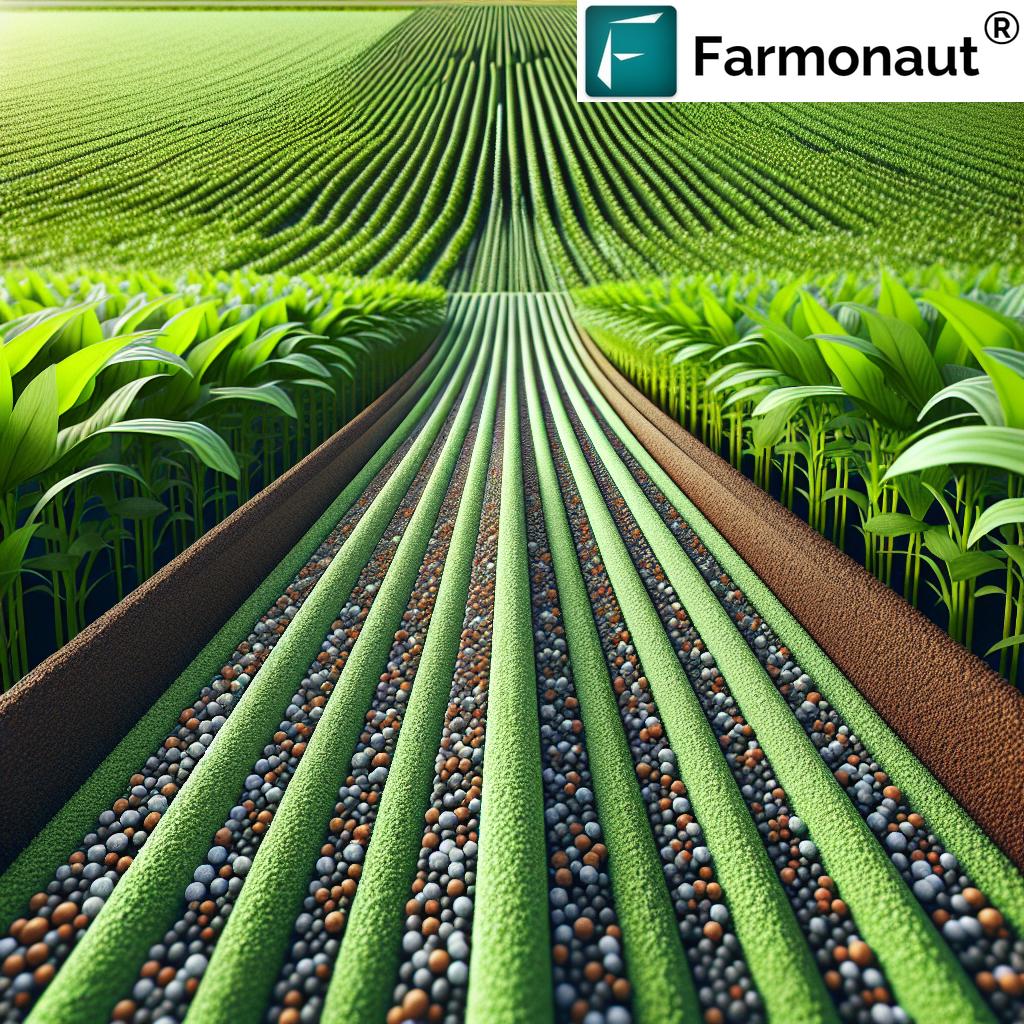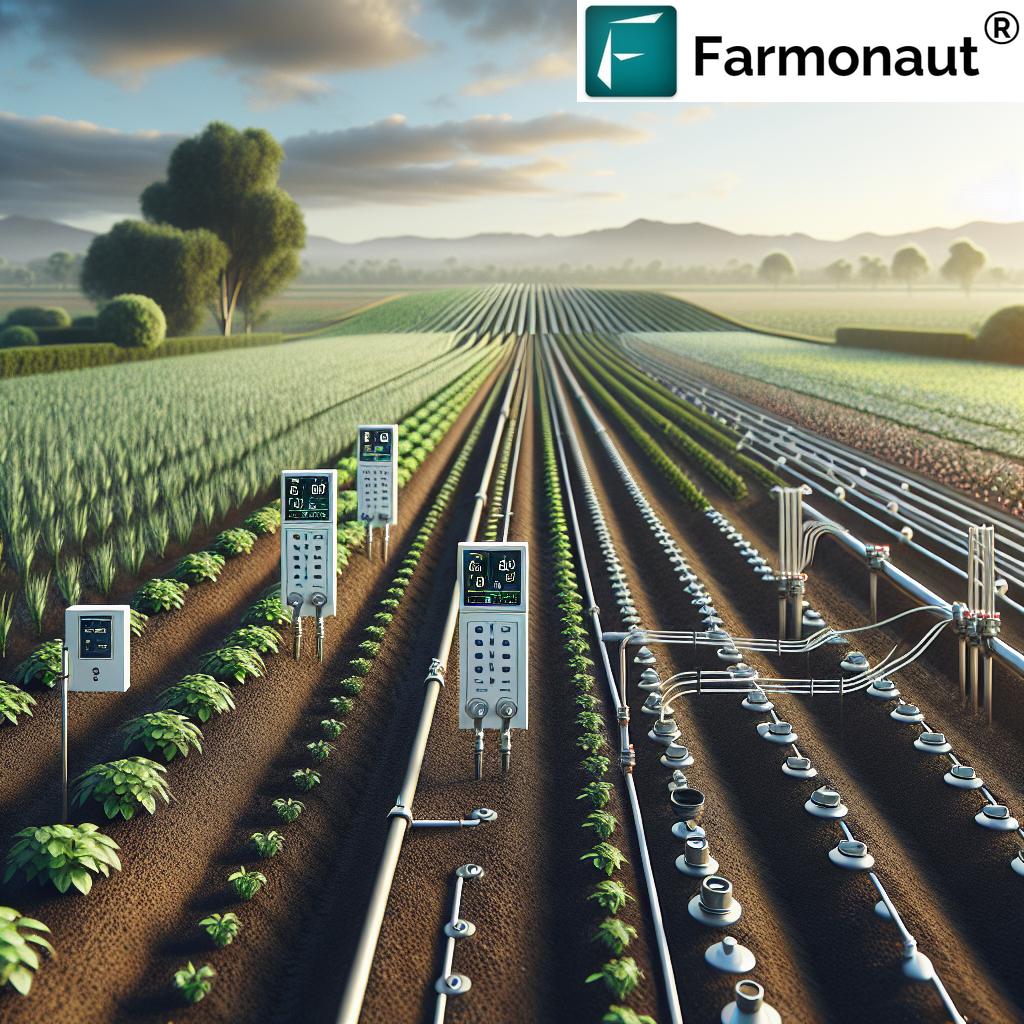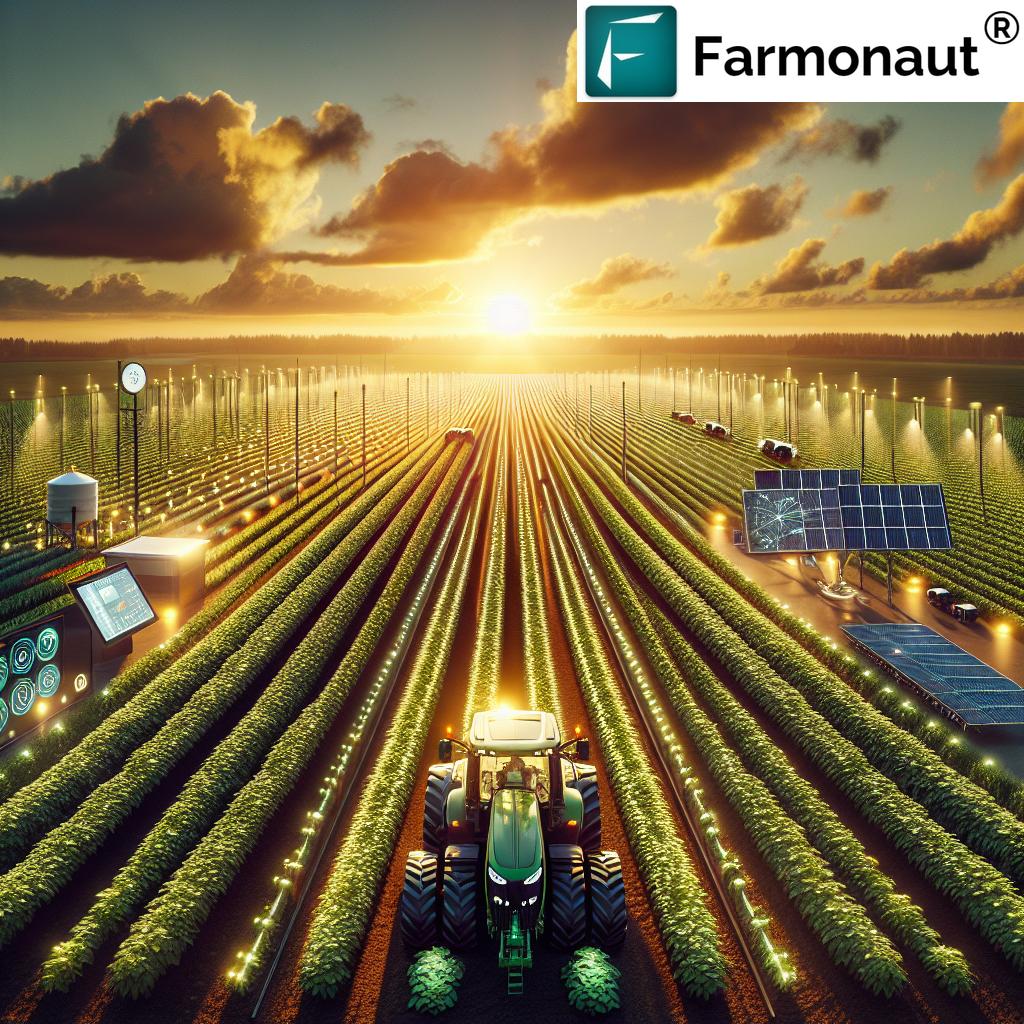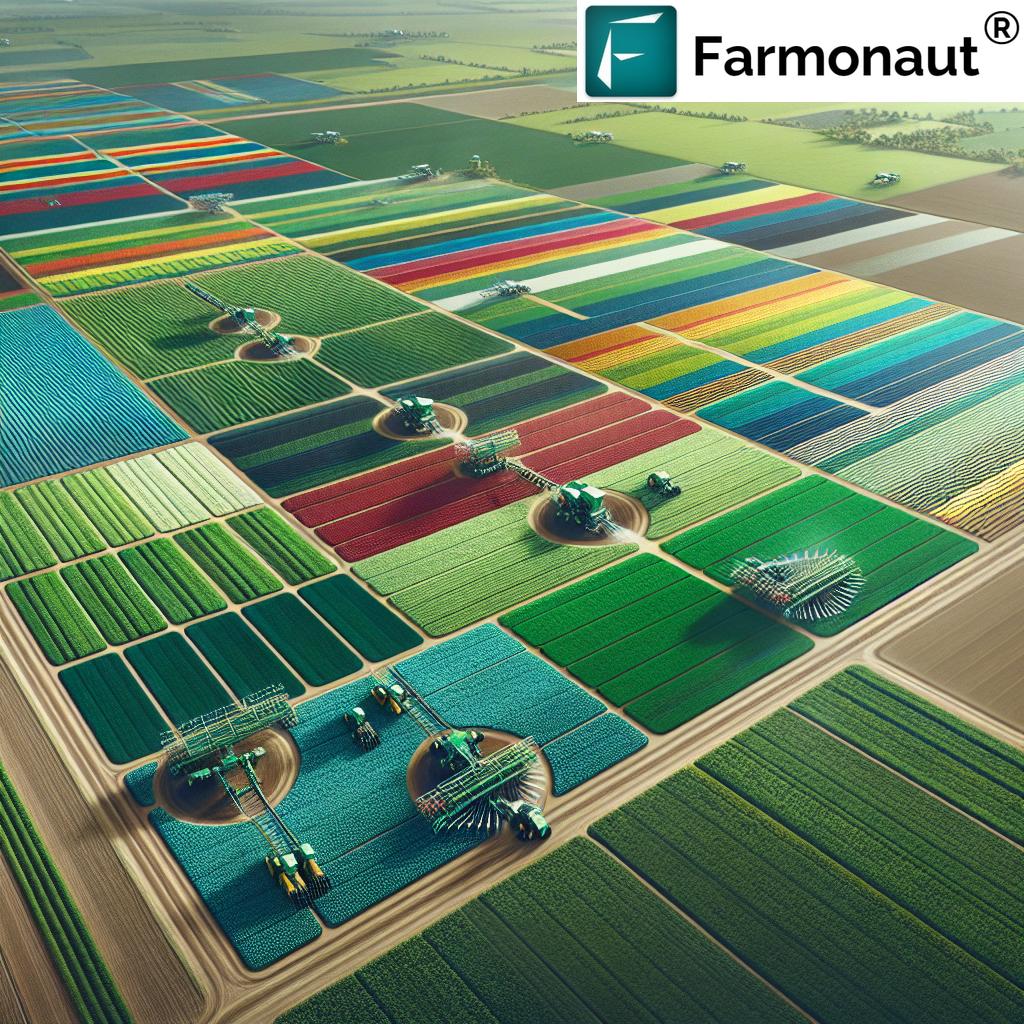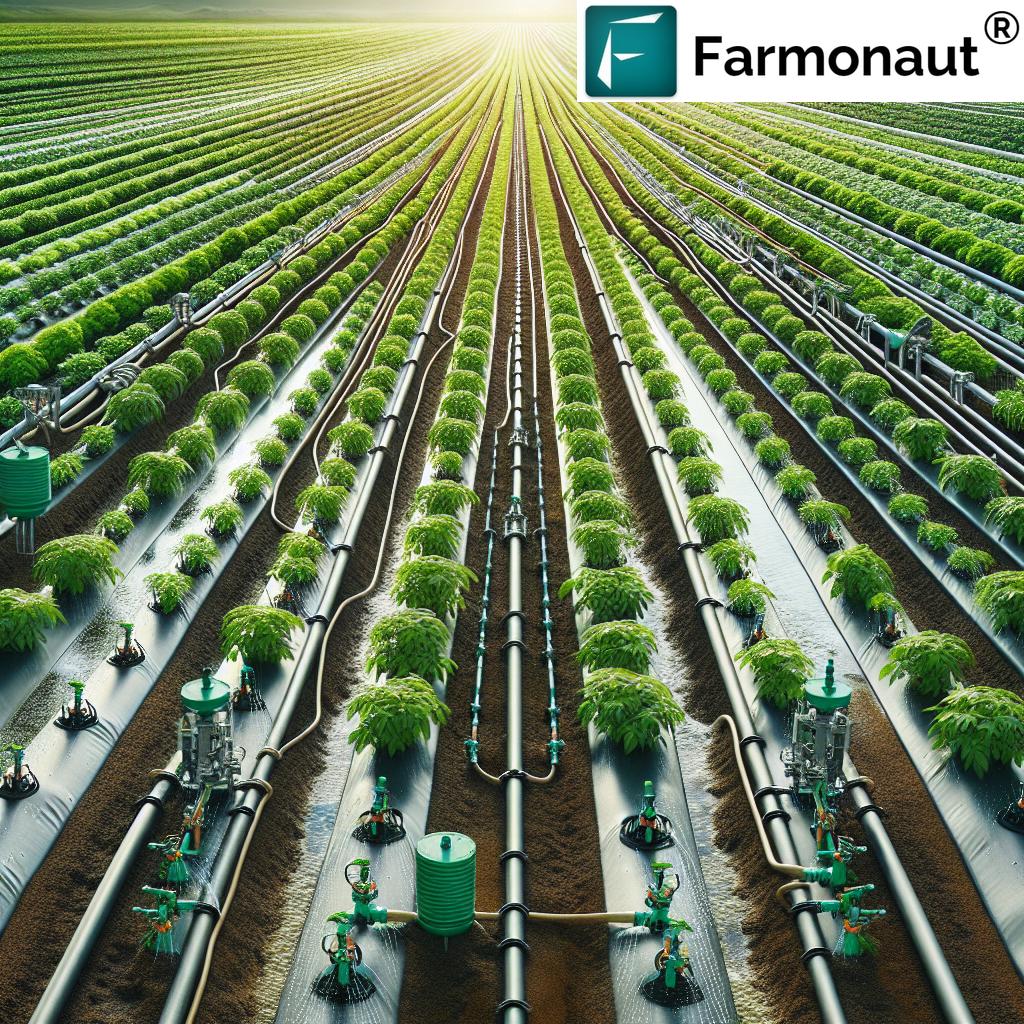Table of Contents
- Market Overview
- Key Technologies in Crop Monitoring
- Technology Impact Comparison Table
- Market Segmentation in Crop Monitoring
- Key Market Drivers
- Challenges Facing Crop Monitoring
- Farmonaut: Satellite-Based Crop Monitoring Platform
- Future Outlook for Crop Monitoring Market
- Farmonaut Subscription Plans
- Frequently Asked Questions (FAQ)
“AI-powered crop monitoring can boost yields by up to 30% through real-time data analysis and precision farming techniques.”
Crop Monitoring Market 2024: Tech Secrets for Massive Yields
In the evolving landscape of agriculture, crop monitoring technologies have emerged as game-changers for farmers seeking to optimize yields, minimize resource waste, and promote sustainable farming practices. As we step into 2024, the integration of IoT in agriculture, AI-powered farming insights, and advanced remote sensing platforms is fundamentally transforming how we monitor, manage, and boost crop productivity—while also reducing the environmental impact of modern farming.
The crop monitoring market continues to expand rapidly. Valued at approximately $2.6 billion in 2022, it is projected to reach $9.8 billion by 2032, growing at a compelling 14.6% CAGR (2023–2032). Reference: coolest-gadgets.com
In this comprehensive overview, we’ll explore how IoT sensors, satellite imagery, artificial intelligence, and machine learning are making actionable, real-time data accessible for effective farm management. We’ll also dissect market drivers, challenges, segmentation, and the future value of next-gen crop monitoring systems—spotlighting solutions that help farmers worldwide increase yields with technology.
Key Technologies in Crop Monitoring for 2024
Crop monitoring technologies have moved from experimental to essential in modern agriculture. Let’s examine the top innovations making the biggest impact in sustainable crop management and precision agriculture solutions:
-
IoT Sensors & Devices:
Internet-connected soil and environmental sensors collect real-time data on soil moisture, temperature, and nutrient levels. With this information, we can optimize resource usage—reducing waste and improving yields. -
Remote Sensing for Crop Monitoring:
Satellites and drones with multispectral cameras capture detailed imagery of crops and field conditions, unlocking data on crop health, soil, and weather that was previously invisible. -
AI-Powered Farming Insights:
Artificial intelligence and machine learning analyze huge datasets from various sources to identify plant health issues, predict crop performance, and recommend precise interventions. These tools go beyond human capacities for early detection and strategic decision-making. -
Automation & Robotics:
Modern machinery and robots automate tasks from planting to harvesting, informed by real-time sensor data and guidance technology. -
Farm Management Platforms:
Integrated platforms such as Farmonaut’s large-scale farm management tool allow monitoring and management of every process—from seed to harvest—across multiple fields and regions with unmatched efficiency.
Technology Impact Comparison Table: Crop Monitoring Solutions 2024
| Technology Type | Key Features | Estimated Yield Increase (%) | Estimated Cost Savings (%) | Sustainable Farming Impact | Example Use Cases |
|---|---|---|---|---|---|
| IoT Sensors & Devices | Soil, moisture, and nutrient sensors; real-time field monitoring; connected irrigation | 10–20 | 15–25 | High–Direct input optimization, reduced water/fertilizer usage | Soil moisture-based irrigation scheduling; nutrient management |
| Satellite Imagery & Remote Sensing | Multispectral imaging; NDVI and crop health maps; field-scale analysis | 15–25 | 10–20 | High–Early disease/pest detection, broad monitoring coverage | Field scouting, early detection of crop stress/disease |
| AI Analytics & Machine Learning | Data integration, predictive analytics, crop yield forecasts | 20–30 | 20–30 | Very High–Automated decisions, scalable advisory | Yield prediction, pest/disease identification, resource allocation |
| Farm Management Platforms | End-to-end operation tracking, data-driven management, fleet/resource optimization | 10–25 | 15–30 | High–Transparency, efficiency, compliance | Expense tracking, carbon footprint monitoring, traceability |
| Automation & Robotics | Precision machinery guidance, autonomous field operations | 10–20 | 10–20 | Moderate–Labor savings, input optimization | Robotic planters, autonomous harvesters, drone spraying |
As evident, combining IoT sensors, remote sensing imagery, and AI-based analytics — the pillars behind future-proof platforms like Farmonaut — delivers rapid, measurable improvements in productivity, cost, and sustainability across the global agriculture industry.
Looking to integrate these cutting-edge crop monitoring solutions into your platforms or research? Farmonaut offers robust API access for satellite and weather data—enabling you to harness real-time insights directly within your agri-business software. Visit the developer documentation to get started!
Crop Monitoring Market Segmentation: Technology, Application, and Region
To understand the market landscape, let’s explore key segments driving the adoption of crop monitoring technologies globally:
By Technology:
- Sensing & Imagery: Real-time sensors collect environmental and plant data, while satellite imagery (like that used by Farmonaut) captures crop conditions at field scale.
- Automation & Robotics: Autonomous equipment brings precision and efficiency to field operations such as weeding, planting, spraying, and harvesting.
- Variable-Rate Technology (VRT): Enables input application (water, fertilizers, pesticides) at varying rates within a single field—optimizing usage and reducing costs.
- Guidance Technology: Uses GPS-enabled systems for precise machinery guidance—reducing overlaps, waste, and labor demands.
By Application:
- Crop Monitoring: Tracking crop health, growth stages, and performance for optimized yields.
- Soil and Crop Health Monitoring: Sensors assess soil moisture, temperature, and nutrients to inform targeted irrigation and fertilization.
- Weather Monitoring & Forecasting: Integrated weather data supports critical farming decisions, improving yield projections and risk management.
- Yield Monitoring: Measures productivity, supporting sustainable practices for future planting.
- Pest and Disease Detection Systems: Advanced imaging and analytics deliver real-time detection of pests and crop diseases, enabling timely interventions.
By Region:
- North America: Dominates with a 45% market share (2022) due to a high adoption rate and robust investments in precision agriculture solutions.
- Asia-Pacific: Rapid growth anticipated—driven by food security concerns, government support, and modernization of farming practices.
- Europe: Steady expansion as countries like Germany and France lead the way in sustainable, tech-driven crop monitoring.
“In 2024, over 60% of large farms globally are expected to adopt advanced crop monitoring technologies for sustainable agriculture.”
What’s Fueling the Crop Monitoring Market Boom?
Understanding the market dynamics reveals why crop monitoring technologies are rapidly gaining ground in farming systems worldwide:
-
Need to Reduce Crop Losses:
With unpredictable weather and rising pest infestations, farmers need reliable, early detection tools to reduce crop losses and protect food security. -
Achieving Higher Yields Compared to Conventional Farming:
Data-driven technologies enable targeted resource usage, resulting in higher yields and better return on investment for farmers. -
Government Support and Initiatives:
Grants and subsidies encourage technology adoption. For example, as of February 2025, the U.K. government is providing grants for Victorian farmers to adopt IoT in agriculture. (meticulousresearch.com) -
Sustainability Demands:
Climate change and environmental regulations push for more efficient, sustainable farming practices—like those enabled by carbon footprinting tools. -
Expanding Digital Infrastructure:
Improved rural connectivity is enabling wider adoption of cloud-based farm management platforms and mobile applications.
Major Challenges in Crop Monitoring Market Adoption
-
Cybersecurity Concerns:
Expanding use of internet-connected and cloud platforms for farm data raises concerns over data security and privacy. Farmers and agribusinesses must evaluate platforms with robust safeguards. -
High Setup Costs:
While operational payback is high, the initial investment in crop monitoring systems can be significant—especially for small-scale producers. -
Lack of Connectivity & Technical Awareness:
Poor internet connectivity, lack of digital infrastructure, and limited technical know-how in rural communities are major barriers to adoption.
Farmonaut: Advancing Crop Monitoring with Satellite, AI, and Blockchain
At the frontier of crop monitoring market innovation, Farmonaut offers a comprehensive suite of satellite-based farm management solutions—empowering every tier of the agricultural value chain. Here’s how we deliver value:
Satellite-Based Crop Health Monitoring
- Multispectral Satellites: Farmonaut leverages high-resolution satellite imagery to generate NDVI maps and detailed crop health analytics—identifying crop stress, pest, disease outbreaks, and variations in soil moisture.
- Real-Time Insights: By providing weekly and seasonal updates, Farmonaut ensures that farmers always have the latest data to make data-driven decisions, optimize resource usage, reduce losses, and plan interventions precisely.
Jeevn AI Advisory System
- AI-powered farming insights via Farmonaut’s Jeevn platform deliver real-time advisory, smart weather forecasts, and personalized management strategies—all directly to the farmer’s mobile or web dashboard.
- This system analyzes satellite data, weather patterns, and ground sensors with machine learning to recommend optimal actions.
Blockchain-Based Traceability
Farmonaut enables transparent, blockchain-secured supply chain traceability for food and agricultural products. Every stage— from planting to final delivery— is tracked securely, enhancing consumer trust and reducing fraud in agri-trade.
Explore more about traceability benefits for your agribusiness: Farmonaut Product Traceability
Fleet & Resource Management
For agribusinesses operating at scale, Farmonaut streamlines fleet management and resource tracking—enabling optimal machinery usage, reducing transit costs, and improving operational performance.
Discover our advanced fleet tracking tools here: Farmonaut Fleet Management
Carbon Footprinting for Sustainability
As sustainable farming practices become essential, Farmonaut’s carbon footprinting feature (see Carbon Footprinting Solutions) helps monitor GHG emissions and promotes compliance with sustainability standards.
Business Models for All Scales
- Subscription-based access for individuals, cooperatives, agribusinesses, and government organizations.
- API integration for enterprises and tech developers (learn more: Farmonaut API).
- Mobile apps (Android | iOS) and web platforms offering real-time access to satellite data (see Farmonaut Web App).
- Partners with financial institutions to speed up crop loan and insurance verification: Crop Loan & Insurance Verification
Localization: Reaching Every Farmer, Everywhere
- Farmonaut’s mission: make precision agriculture affordable and accessible globally—reaching individual farmers, agribusinesses, government, and research organizations across North America, Asia-Pacific, Europe, and beyond.
- Available on all devices for field and remote management.
Sustainability: Carbon Footprint Tracking
Blockchain Traceability for Food Supply Chains
Large-Scale Farm Management Platform
The Future of Crop Monitoring: Trends and Opportunities
As we look toward 2032 and beyond, crop monitoring market dynamics suggest continued, significant evolution fueled by:
-
Accelerating AI and Machine Learning Integration:
Predictive analytics will further empower farmers to optimize yields with technology—receiving personalized, automated recommendations for irrigation, fertilization, and pest control. -
Affordable, Scalable Solutions:
Platforms like Farmonaut are driving democratized access by relying on affordable satellite data, bypassing the need for expensive in-field hardware. -
Government Support:
As more countries recognize the value of data-driven agriculture, subsidy and grant programs will continue to expand—expanding connectivity and technical training in rural areas. -
Sustainability & Compliance:
Carbon and resource tracking will become essential for food exporters and governed supply networks. (Learn more) -
API-Driven Agriculture:
Data APIs (like Farmonaut API) let developers across the world build custom solutions and integrate global satellite intelligence into local applications. -
Integration Across Devices:
Field managers, agronomists, and researchers will collaborate seamlessly via shared mobile, web, and IoT dashboards.
Farmonaut Pricing & Subscription Options
You can get started with real-time crop and farm monitoring today. Farmonaut’s subscription model scales from individual fields to large corporate and government needs. See our current plans below:
Conclusion: Crop Monitoring Is the Future of Massive Agricultural Yields
The crop monitoring market is no longer a future possibility—it is today’s competitive advantage for producers, agribusinesses, and governments planning for food security and climate resilience. Powered by IoT devices, remote sensing imagery, artificial intelligence, and cloud-based farm management platforms, we are entering an era where every field’s data can be transformed into actionable insights.
Platforms such as Farmonaut make affordable, scalable, precision agriculture a reality for every size operation. By integrating advanced technology and data-driven decision-making into traditional farming practices, we can increase crop yields with technology while advancing the cause of sustainable farming practices across every region.
Frequently Asked Questions (FAQ)
1. What is crop monitoring and why is it important?
Crop monitoring is the use of technologies—such as IoT sensors, satellite imagery, and AI analytics—to track crop and soil health, detect pests and diseases, and monitor environmental conditions in real time. It is vital for increasing yields, reducing resource usage, and enabling sustainable agriculture.
2. How does IoT in agriculture work for crop monitoring?
IoT in agriculture connects sensors placed in fields to the internet, allowing farmers to receive real-time data on soil moisture, temperature, and crop health directly to their mobile device or management dashboard.
3. What role does AI play in crop monitoring?
AI-powered farming insights automate analysis of large datasets, enabling early detection of crop stress, forecasting yields, and recommending optimal interventions. These technologies make farm management far more precise and efficient.
4. Are these high-tech crop monitoring systems affordable for small farms?
Yes! Services like Farmonaut use affordable satellite imagery, eliminating the need for expensive sensors on every hectare. Subscription models and app-based platforms bring cost-effective precision agriculture solutions to all farmers.
5. How do I access Farmonaut’s crop health monitoring?
Easy! Use the web platform or download the Android app/iOS app to start monitoring your fields with real-time satellite analytics.
6. Can Farmonaut help with agricultural loan/insurance verification?
Absolutely. Farmonaut supports banks and insurers via satellite-based verification, helping process crop loan and insurance claims faster and with far less fraud.
7. Why is blockchain traceability important in crop monitoring?
Blockchain ensures transparent, tamper-proof tracking of product journeys from farm to consumer. Farmonaut’s traceability feature helps build trust and verify the authenticity of food/agricultural products.
8. Where can I get developer/API access to Farmonaut’s crop data?
Visit our API platform and check out the developer docs to integrate Farmonaut’s satellite and weather data with your own agri-software.
9. How does Farmonaut address sustainability?
By providing carbon footprint tracking and resource optimization tools, Farmonaut empowers both smallholder and large-scale operations to measure, manage, and reduce their environmental impact.
Ready to take your farm or agribusiness to the next level?
Start monitoring your crops with satellite, AI, and blockchain today!






